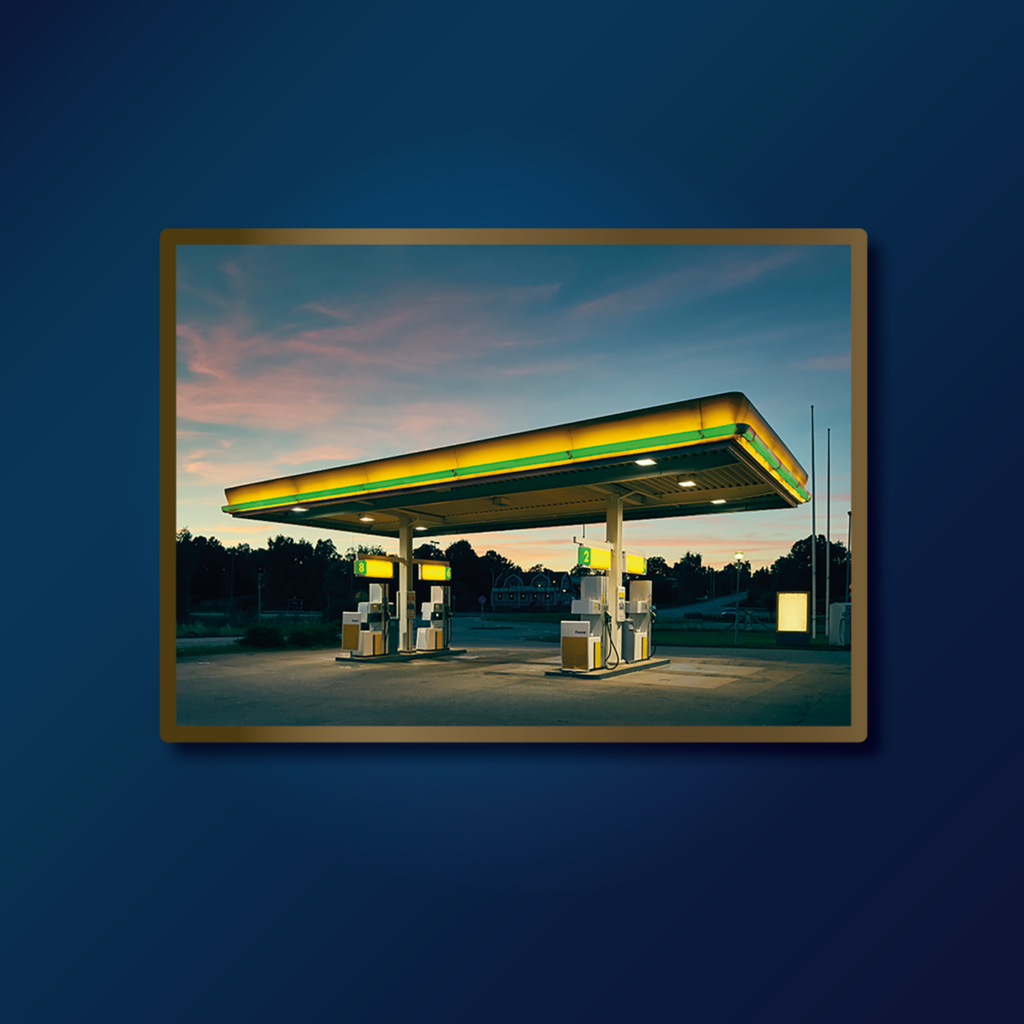Many people were dependent on the car during the fossil era. They even used it daily. And when you needed to refuel your car with petrol or diesel – well, then you went to the gas station!
The gas station was everywhere, often along major roads. In addition to fuel, they sold everything you might need on a road trip: hotdogs, sweets and mobile phone chargers.
However, when the climate transition started to take off, the gas station found it more and more difficult to survive. Car travel continued, but almost exclusively for those who were unable to travel by train, bus or bicycle. The gas station lost a lot of customers.
The ban on selling fossil fuels introduced in Sweden in 2030 was a major setback for the gas station. For the first few years, the gas station survived due to loopholes in the law (selling to trucks and commercial vehicles were only banned in 2032), but when these possibilities were blocked off too, times became truly harsh for the gas station. The gas station continued to sell biofuels, but the supply was uncertain and demand varied. The most common customers were neighbours who needed fuel for their work machines.
The boom in electric vehicles also changed a lot. Initially, the gas station benefitted from this growth and installed fast charging stations. But when the range of electric cars improved and the availability of chargers in homes and parking garages increased, many car owners asked themselves: “Why wait for twenty minutes on a cold highway when I can explore a new city or take a walk in the woods?”
Charging stations appeared in newly extended parking spaces in woodlands, which was great for landowners who found a new source of income. Others charged their cars in parking garages with good connections in the form of public transport. Fewer and fewer stopped at the gas station.
Today, you can still see the gas station here and there when you travel around the country. However, what now attracts customers is the unmanned supermarkets, plant nurseries and mini museums. We especially recommend the odour museum outside Ludvika where you can experience the stench of the megacities of the 2000s!
Non-renewable energy sources: Energy sources that are regenerated very slowly, or not at all, and may thus run out here on earth, such as fossil fuels and uranium.
Carbon dioxide (CO2): A greenhouse gas produced during combustion or biological decay and absorbed in photosynthesis. When we burn fossil fuels, the level of carbon dioxide in the atmosphere goes up, which leads to global warming.
This text is part of the future scenario and study material Beyond the Fossil Era.
